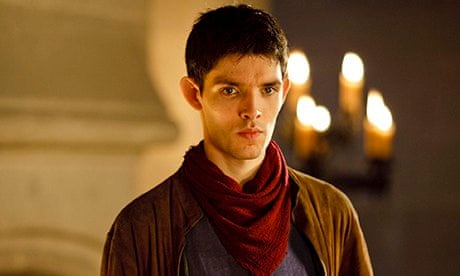It turns out that Merlin isn't real. He is, in fact, a big fat hoax, made up by a writer who had run out of things to say and was getting desperate. "Geoffrey of Monmouth" sounds as if he should be a bank manager of scrupulous honesty. A man you could imagine wanting to count the daily takings twice. In fact, he was a 12th-century churchman who pulled off a textual forgery bigger than anything dreamt up by Macpherson or Chatterton at their most high-handed.
By the 1130s Geoffrey clearly felt that he was getting too big for the Marches and decided to do something that would make the world take notice. His bright idea was to write a History of the Kings of Britain. Into the slightly dull chronicle of battles and land grabs he embedded a big dollop of fiction about a character called Merlin, doing that classic thing of passing off his work as a translation of a long-lost ancient text. According to this confection, Merlin was a boy magician at the court of Vortigern, king of the Britons. Later, as an adult wizard, Merlin changes Uther Pendragon's appearance so that he can sleep with the wife of the Duke of Cornwall. Out of this moment of magical pandering King Arthur is conceived. But Merlin, in Geoffrey's version, doesn't hang around to act as twinkly tutor to the marvellous boy. You have to wait until Thomas Malory, writing on the brink of the Renaissance, before you get the whole lovely dreamscape that is Camelot.
The History of the Kings of Britain turned out to be a belter by 12th‑century standards. What got people riveted were the chapters in which Merlin, chanelled through Geoffrey, spewed out a long narrative history of the country, which reached back to the fall of Troy and flew forward to the end of time. Along the way Merlin appeared to foretell recent events, such as the Norman conquest, before setting out a future for Britain that, though a bit hazy on detail, sounded reassuringly solid, spectacular even.
At a time of great dynastic insecurity – we're talking about the decade in which Stephen and Matilda did their complicated shuffle on the British throne – Merlin's upbeat prophecies went down a treat. Geoffrey was clever enough to couch his ventriloquist dummy's utterances in a way that made them sound as old as time rather than stitched together under pressure. Using biblical tropes he managed to imply, without exactly saying so, that Britain had always played a special part in God's great plan. In the process, a small island stuck on the edge of the known world started to believe that it might just matter.
Anne Lawrence-Mathers's account of Merlin's origins as a made-up textual entity rather than a real and revered figure looming out of a remote Celtic past is not for the fainthearted. A university-based medievalist, Lawrence-Mathers expects her readers to keep up as she flicks nimbly through the key historical texts of the high Middle Ages, mapping the process by which Geoffrey's monumental fraud was gradually assimilated into Britain's master narrative.
It is, though, what happens next that is really extraordinary. Having got himself embedded in everyone's consciousness as the maker of Britain, Merlin then managed to slip the leash and started popping up in European chronicles as a kind of international Mr Fixit. In the Italian tradition he morphs into a sibyl and hands out helpful hints on the future of Tuscany and Lombardy. In France he becomes a kind of Time Lord, able to advise Julius Caesar on some of his more troubling dreams while simultaneously urging an Muslim king to convert to Christianity. He even becomes a bit of a romantic hero, succumbing to a doomed obsession with wily Vivien, a story that would be revisited more than six centuries later by Tennyson in his Idylls of the King.
What made Merlin so malleable, suggests Lawrence-Mathers, is his half-human status. His father was a demon, which accounts for his handy knack of being able to foretell the future, not to mention change the material world at will. He thought nothing of moving Stonehenge from Ireland to Salisbury Plain and could shape-shift from an ugly old man to a beautiful boy.
All quite marvellous of course but also, explains Lawrence-Mathers, slightly troubling. The early chroniclers took great care to position Merlin as a practitioner of "natural magic", a super-tuned interpreter of God's miraculous world. Liberated from any taint of necromancy, he was free to flit through time and space doing good.
By the later Middle Ages, though, the ability to summon up the east wind at will no longer seemed quite so harmless. Growing worries about witchcraft meant that having a demon as a dad was turning into a liability. Consequently when Malory came to write Le Morte d'Arthur in the mid-15th century, it seemed safer to make the man in the pointy hat come to a sticky end. Accordingly, Merlin meets his fate at the hands of his erstwhile lover Vivien, who by now has turned into "Nenyve". Annoyed by Merlin's latest incarnation as a sex pest, Nenyve seals the magus up in a rock for all eternity. And this time, it transpires, no amount of shape-shifting will allow him to get out from under.
To order The True History of Merlin the Magician go to guardianbookshop.co.uk.

Comments (…)
Sign in or create your Guardian account to join the discussion